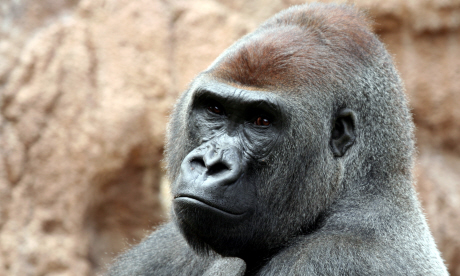
The third episode of Africa is set to grace our screens this evening on BBC 1. In preparation for the Congo episode here's a handy guide to which gorilla is which...
The world’s most critically endangered sub-species of gorilla was captured on camera in the wild for the first time in 2012, which isn’t surprising as there are only about 300 left. They look similar to their western lowland cousins, but with smaller and shorter skulls.
Where found: The largest numbers live in Nigeria but they’re also found (and were filmed) in south-west Cameroon. The bad news is the population is divided across human-inhabited areas; the good is that more suitable habitat for them has been found. There’s hope yet.
Shaggy coats and sideburns: no, not a 70’s throwback – mountain gorillas. The most famous of all the gorillas are the ones you’re mostly likely to see: gorilla tourism is a mainstay of both Uganda’s and Rwanda’s economies. Often called a ‘perfect hour’ by people who’ve met them, visits to habituated groups are well controlled. Apart from poachers (still a big problem), your germs are the greatest threat to the remaining 790 or so animals; steer clear if you have a cold.
Where found: West Uganda, north-west Rwanda, east DR Congo.
The eastern lowland gorilla is the largest sub-species, and a bit of a smooth operator: they have longer faces, they’re less shaggy and more muscular than the other eastern species (mountain gorilla) thanks to climbing fruit trees. This sub-species also holds the record for the largest gorilla recorded – a silverback measuring 1.94m, which was shot in 1938. There are thought to be around 5,000 left in the wild, but the population plummeted during DRC’s civil war due to bushmeat hunting.
Where found: Eastern DR Congo.
Chances are you’ve seen these guys (Gorilla gorilla) if you’ve ever been to the zoo. However, the world’s most widespread gorilla is actually quite tricky to see in the wild. You’ll know these critically endangered creatures by their short, brownish-black coats and ginger crowns. Estimates suggest there are up to 200,000 individuals out there; threats include bushmeat hunting, habitat loss and disease.
Where found: Angola (Cabinda only), Cameroon, Central African Republic, Congo, DR Congo, Equatorial Guinea and Gabon.